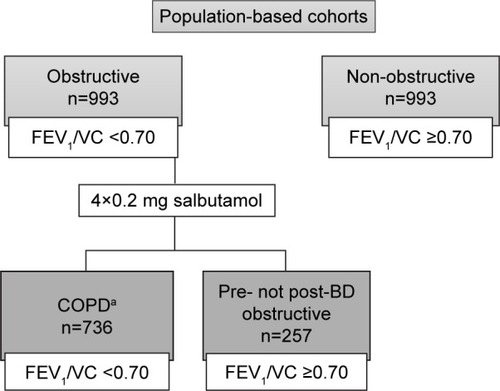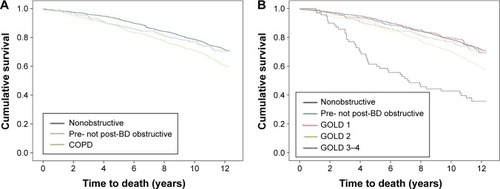Figures & data
Figure 1 Study population by spirometric classification.
Abbreviations: BD, bronchodilator; FEV1, forced expiratory volume in 1 s; GOLD, Global Initiative for Chronic Obstruc tive Lung Disease; VC, vital capacity.

Table 1 Basic characteristics of the study population at recruitment, comparing COPD, pre- not post-BD obstructive, and nonobstructive subjects
Table 2 Basic characteristics among men and women at recruitment, comparing the groups COPD, pre- not post-BD obstructive, and nonobstructive
Table 3 Basic characteristics at recruitment, comparing men and women within the groups COPD, pre- not post-BD obstructive, and nonobstructive
Figure 2 Survival among nonobstructive, pre-BD obstructive, and COPD (A) illustrated by Kaplan–Meier curves, (B) divided into GOLD 1, GOLD 2, and GOLD 3–4 illustrated by Kaplan–Meier curves.

Table 4 Unadjusted analyses of risk for death, expressed as HR (95% CI), among subjects with pre- not post-BD obstructive and COPD, also divided into GOLD stages, in comparison with nonobstructive,Table Footnotea in the total study population, also stratified by age group and sex
